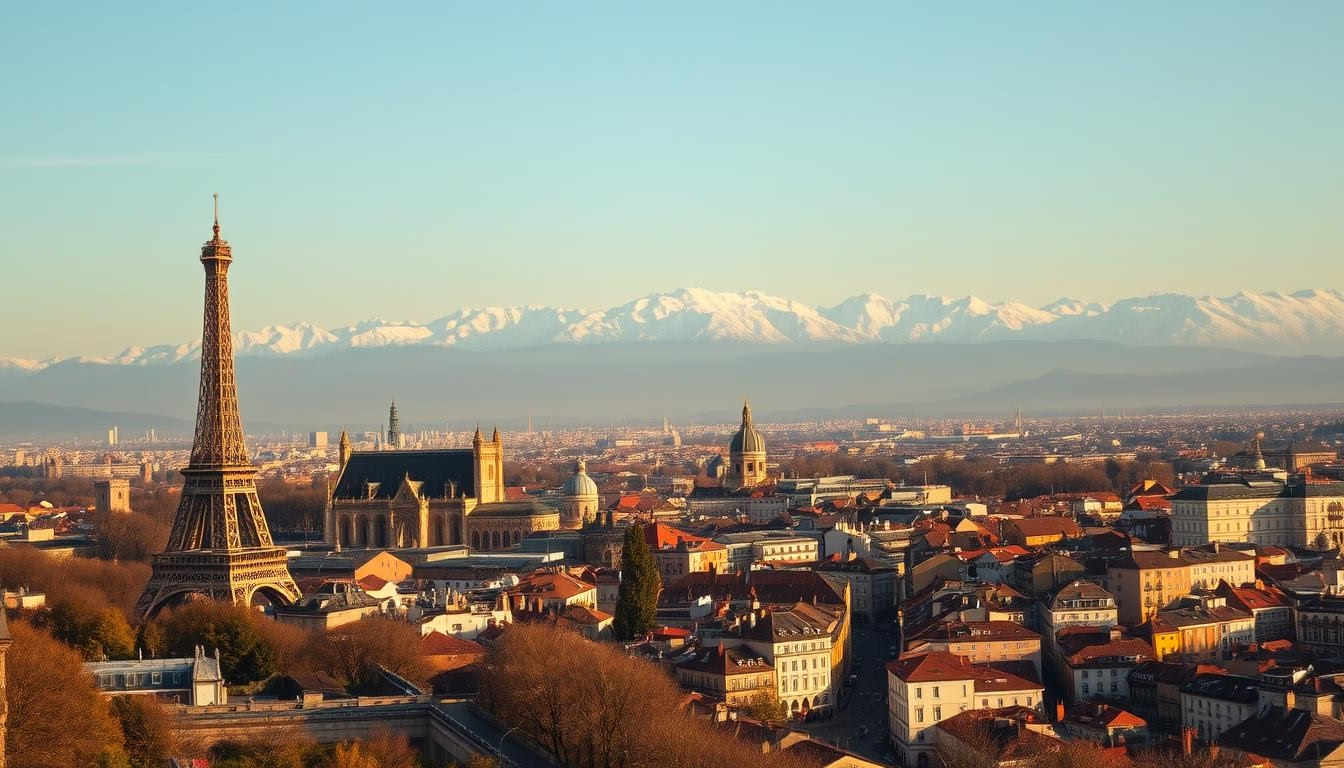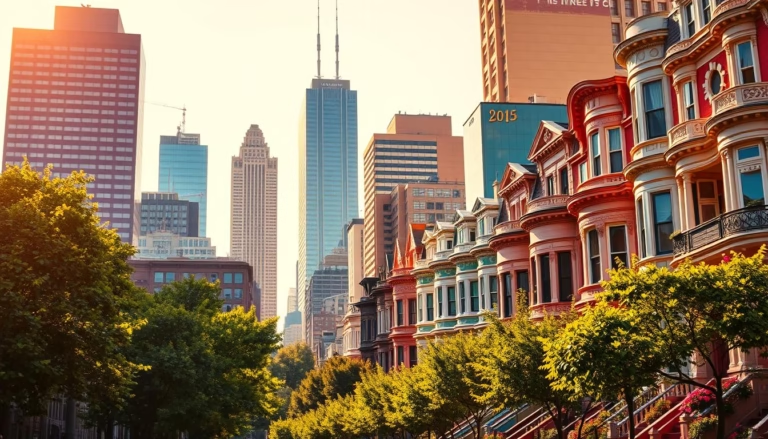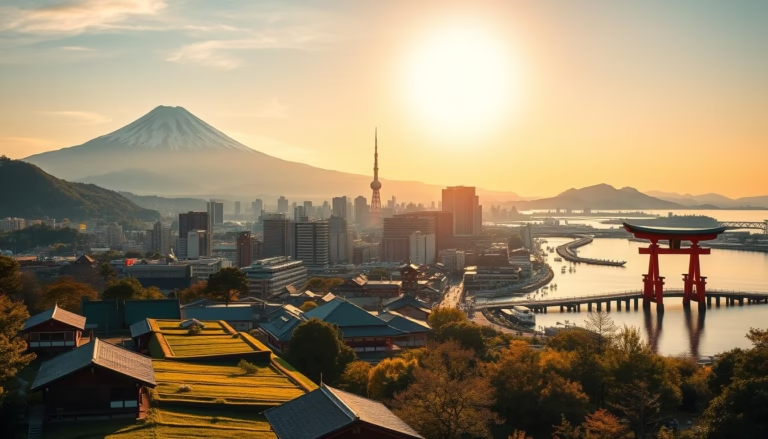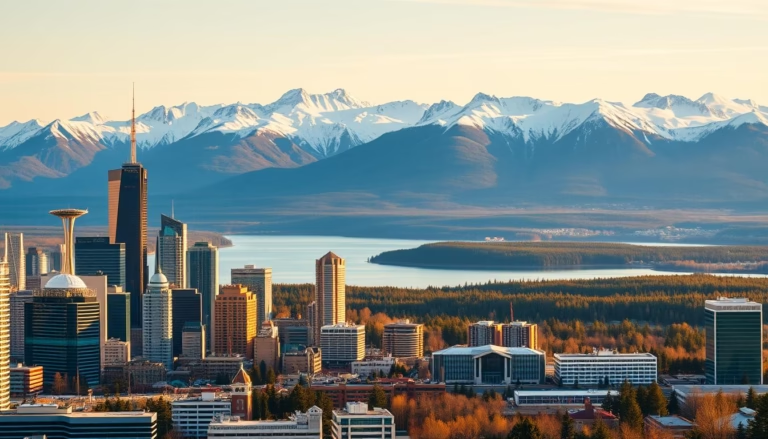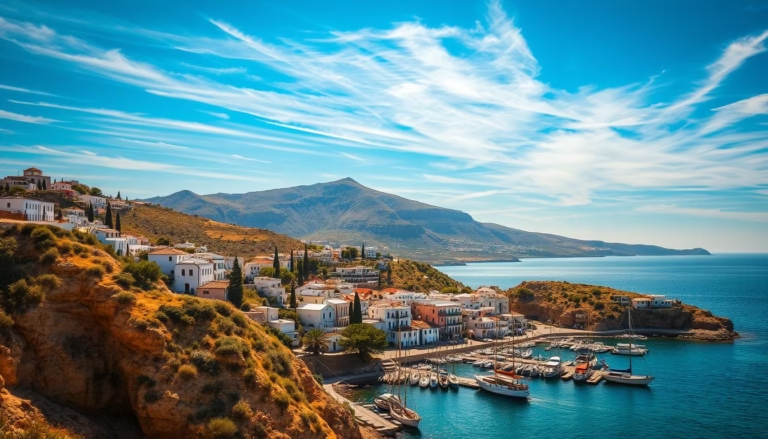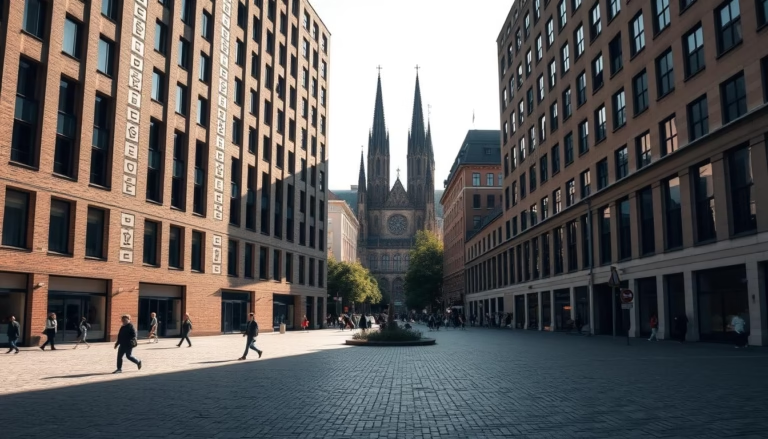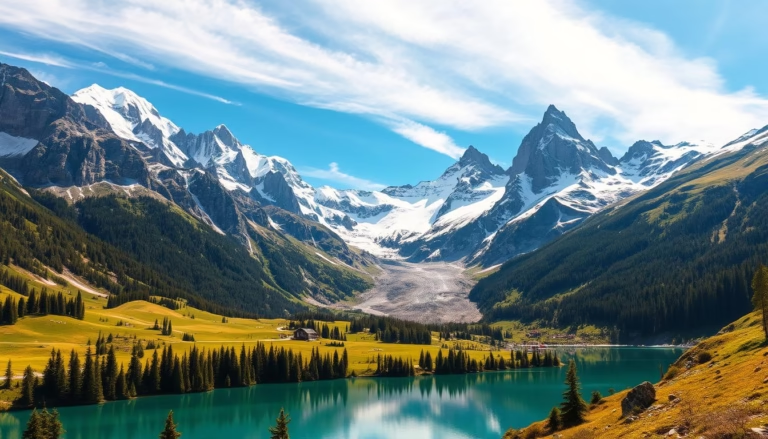Best Cities to Visit in France: Travel Guide & Tips
Did you know over 90 million travelers explored France last year, making it Europe’s most visited country? Yet many stick to crowded hotspots, missing the authentic charm tucked between bustling cities and serene countryside. This guide focuses on lesser-known destinations where culture thrives and crowds fade.
Having driven thousands of miles through winding mountain roads and vineyard-lined valleys, we’ve uncovered towns where time moves slower. Picture cobblestone streets in medieval villages, family-run bistros serving boeuf bourguignon, and sunlit plazas buzzing with local markets. These spots reveal the true heartbeat of the country.
You’ll learn how to navigate regional trains, avoid peak-season chaos, and savor dishes you won’t find in guidebooks. From coastal gems like Collioure to alpine towns like Annecy, each location offers distinct flavors and traditions. We’ve prioritized places where you can connect with artisans, vintners, and storytellers who keep France’s heritage alive.
Key Takeaways
- Focus on destinations beyond major hubs for richer cultural experiences
- Seasonal timing dramatically impacts crowd levels and local events
- Regional trains and scenic driving routes offer flexible exploration
- Authentic dining often happens at small, family-owned establishments
- Many historic towns provide free walking tours led by residents
- Mix well-known cities with nearby villages for balanced itineraries
Introduction to the French Adventure
France’s true magic lies not in its postcard views but in moments that linger long after you’ve left. Picture sipping espresso beside a 15th-century fountain or chatting with a cheesemaker about their craft. Every city pulses with its own rhythm, from Marseille’s portside bustle to Colmar’s fairytale canals.
Regional contrasts shape your journey dramatically. Provence’s lavender fields and Normandy’s cider farms aren’t just landscapes – they’re living classrooms of history. Local people often share stories you won’t find in museums, like how their grandparents perfected a cassoulet recipe.
Timing transforms your experience. Visit Alsace in December for gingerbread-scented markets, or catch Corsica’s wildflowers in April. Trains connect major hubs, but renting a car lets you chase golden-hour light through vineyard roads.
Three essentials for planning:
- Mix iconic stops with smaller towns nearby
- Prioritize seasonal festivals for authentic cultural immersion
- Leave room for unplanned detours – that’s where magic happens
The Rich History and Culture of France
France’s landscape serves as a living timeline where every stone whispers stories. Twelve UNESCO World Heritage sites – from Avignon’s papal palaces to Strasbourg’s cobbled lanes – showcase how history shapes modern life. Walk streets where medieval artisans once hammered metal and spun wool, their legacies etched into place names like Rue des Dentelles (Lace Street).
Medieval Heritage and Architectural Gems
Strasbourg’s half-timber buildings lean like storytellers sharing secrets. The city’s layout hasn’t changed since the 15th century – follow Rue Mercière to find haberdashery shops still occupying spaces where tailors once measured cloth. Lyon reveals even older layers with Roman theaters buried beneath Renaissance courtyards.
Three architectural eras dominate:
| Period | Example | Unique Feature |
|---|---|---|
| Roman | Lyon Amphitheater | 4,000-seat arena |
| Gothic | Rouen Cathedral | Butterfly stained glass |
| Renaissance | Château de Chambord | Double-helix staircases |
UNESCO World Heritage Insights
Earning UNESCO World Heritage status requires meeting strict preservation standards. France’s listed sites range from entire city centers (Paris’ Seine banks) to industrial landmarks (Nord-Pas de Calais mining basin). Each location acts as a cultural anchor, protecting traditions like Alsace’s timber-framing techniques influenced by German neighbors.
Pro tip: Many UNESCO spots offer free guided walks led by historians. These experts decode symbols hidden in cathedral carvings or explain why certain stones weather differently – details most visitors miss.
Iconic Paris and Its Timeless Allure
What if the real Paris isn’t in its postcards but in the quiet moments between landmarks? The city thrives in its tucked-away courtyards and neighborhood bakeries, where the scent of fresh baguettes mixes with the clink of wine glasses. While the Eiffel Tower dazzles first-timers, seasoned travelers know the magic lives in lesser-explored arrondissements.
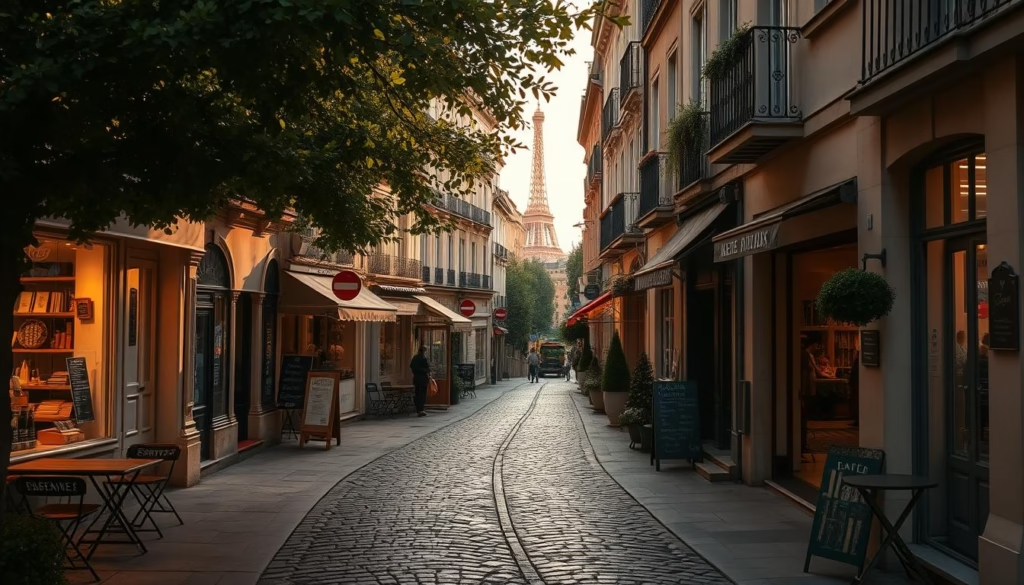
Hidden Corners Beyond the Tourist Trail
Montmartre’s winding streets still echo with the footsteps of Picasso and Dalí. Head northeast to Canal Saint-Martin, where locals unwind with sunset picnics. This 19th-century waterway sees more skateboards than tour buses, especially during golden autumn afternoons.
Three ways to experience Paris like a resident:
- Join the queue at Marché d’Aligre market for cheese samples older than some countries
- Discover street art murals in the 13th arrondissement’s open-air gallery
- Book a table at Chez L’Ami Jean – a Basque bistro serving soul-warming duck confit
The Left Bank’s literary cafés now share the spotlight with innovative restaurants in Belleville. For a unique perspective, rent a vintage Peugeot bike and pedal along cobblestone lanes unchanged for centuries. As one regular at Le Pure Café put it: “Paris isn’t a place you visit – it’s a rhythm you learn.”
Exploring the best cities to visit in france
France’s regional tapestry unfolds through urban hubs where history meets modern flair. Beyond Paris, lavender fields stretch toward Roman aqueducts, and fishing ports spill into vineyard valleys. Each city acts as a gateway to distinct traditions – sip Bordeaux blends aged in oak barrels or taste flammekueche in Alsace, where German bakeries share streets with French cafés.
Regional contrasts shape every trip. The Basque Country’s red-tiled houses contrast with Normandy’s half-timbered manors. Coastal Menton bursts with citrus groves, while Lyon’s silk workshops whisper tales of Renaissance trade routes. Local festivals celebrate these differences – don’t miss Arles’ bull races or Nice’s flower battles.
| Region | Signature Experience | Local Specialty |
|---|---|---|
| Provence | Lavender field photography | Ratatouille |
| Brittany | Coastal cliff hikes | Kouign-amann pastry |
| Alsace | Christmas market tours | Choucroute garnie |
France’s rail network makes hopping between regions effortless. High-speed trains connect Marseille to Strasbourg in 4 hours, passing sunflower fields and medieval ruins. For deeper exploration, rent a car – backroads reveal family-run vineyards and cheesemakers offering free tastings.
Why limit your journey? Blend iconic city stops with hidden valleys. Pair Toulouse’s aerospace museums with nearby Cathar castles. As a Lyon chef once told me: “Our terroir isn’t just soil – it’s centuries of hands shaping flavor.” That passion makes every destination well worth discovering.
Old-World Charm: Avignon and Lyon
Step into cities where cobblestones whisper papal secrets and Roman kitchens simmer with tradition. Avignon and Lyon – separated by 150 miles yet united by their ability to make history feel alive – offer contrasting flavors of southern France’s cultural richness.
Avignon’s Papal Legacy and Scenic Views
The imposing Palais des Papes dominates Avignon’s skyline, its Gothic halls once hosting seven Catholic popes. Walk the remnants of Pont Saint-Bénézet at sunset, watching golden light dance across the Rhône River. This city serves as your gateway to Provence’s lavender fields and the three-tiered Pont du Gard aqueduct.
Lyon’s Culinary Delights and Roman Roots
Lyon’s restaurants tell stories through food. From silk workers’ bouchons serving pork sausages to Michelin-starred tasting menus, every meal celebrates tradition. Beneath the city, ancient Roman theaters still host summer concerts – their stone steps echoing performances from 2,000 years past.
| City | Cultural Highlight | Must-Try Dish | Day Trip |
|---|---|---|---|
| Avignon | Papal Palace frescoes | Provençal herb-crusted lamb | Arles’ Roman arena |
| Lyon | Fourvière Basilica views | Quenelles de brochet | Beaujolais vineyards |
Avignon’s fortified walls contrast with Lyon’s Renaissance courtyards, yet both cities share a knack for preserving their world-class heritage. Food lovers flock to Lyon’s Les Halles market, while history buffs explore Avignon’s medieval chapels. As one local vintner remarked: “Our stones remember what others forget.”
Festive Strasbourg: A Winter Wonderland
Strasbourg’s cobblestone lanes become storybooks come alive each December, when twinkling lights frame 16th-century houses like illustrated pages. While magical year-round, the city transforms into Europe’s holiday capital as temperatures drop, blending French joie de vivre with Germanic gemütlichkeit.
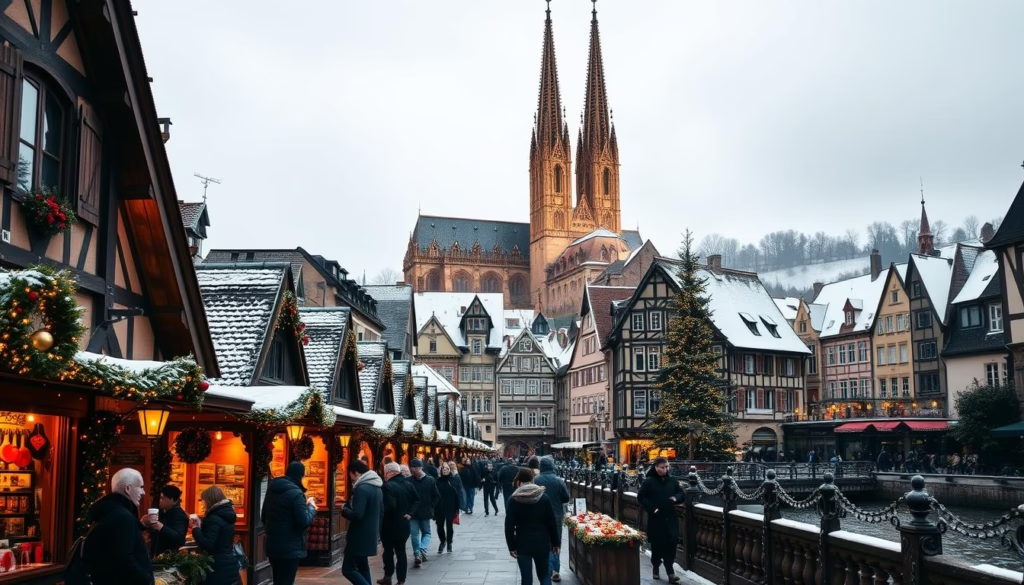
Enchanting Christmas Markets
The Christkindelsmärik – running since 1570 – turns the city center into a sensory feast. Wooden chalets spill gingerbread aromas while artisans demonstrate centuries-old crafts. Locals swear the best moments come after dark, when illuminations turn Gothic facades into golden canvases.
Historic Alsace Architecture
Strasbourg’s architecture tells a 1,000-year story of cultural exchange. Half-timbered buildings tilt like old friends sharing secrets, their wooden beams painted in ochres and blues. The Petite France district preserves original millers’ homes, now housing cozy winstubs (wine bars) serving tarte flambée.
Three reasons to visit beyond December:
- Spring reveals flower-draped balconies along Quai des Bateliers
- Summer boat tours explore the Ill River’s medieval waterways
- Autumn markets overflow with locally brewed Gewürztraminer
As a third-generation market vendor notes: “Our streets remember every season. Winter sparkles, but every time of year brings its own magic.” This living museum of European heritage proves some cities only improve with age.
Quaint Towns and Historic Streets: Troyes and Rouen
Time bends differently in towns where medieval craftsmen once hammered iron into art. Troyes and Rouen – separated by 200 miles but united by their devotion to preserving living history – invite travelers to wander through architectural storybooks.
Troyes’ half-timbered houses glow like honey under the sun, their 16th-century frames leaning over cobblestone streets. This gateway to the Champagne region sits just two hours from Paris by train, making it perfect for tasting tours. Local vintners joke, “Our bubbles rise faster here – something in the limestone soil.”
| Feature | Troyes | Rouen |
|---|---|---|
| Architectural Style | Colorful timber frames | Gothic stone spires |
| Signature Landmark | Saint-Pierre Cathedral stained glass | Joan of Arc execution site |
| Culinary Must-Try | Andouillette sausage | Duck à la Rouennaise |
Rouen’s streets whisper tales of power and rebellion. The cathedral holding Richard the Lionheart’s heart towers over markets selling Camembert cheese. Art lovers detour to Giverny, where Monet’s water lily ponds inspired Impressionist masterpieces.
Both towns masterfully blend past and present. Modern boutiques occupy Renaissance-era shops in Troyes, while Rouen’s medieval quarter buzzes with espresso-sipping students. As one historian noted: “These stones aren’t relics – they’re the stage for today’s stories.”
Coastal Charms: Villefranche-sur-Mer and Marseille
Where Mediterranean blues meet centuries-old harbors, France’s shoreline reveals its most vibrant personalities. Villefranche-sur-Mer’s rainbow houses cling to cliffs above yacht-dotted waters, while Marseille’s Old Port buzzes with fishmongers hawking their dawn catch. These coastal gems offer contrasting snapshots of seaside life.
Stroll Villefranche’s car-free lanes to find family-run crêperies serving buckwheat galettes with local goat cheese. The 16th-century Citadel Saint-Elme now hosts art exhibits overlooking the bay. For grander scale, Marseille’s Calanques national park delivers limestone fjords perfect for sunset kayaking.
Both destinations thrive through maritime traditions. Join Villefranche sailors mending nets at dawn, or sample Marseille’s iconic bouillabaisse stew at a portside bistro. As one third-generation fisherman noted: “Our sea feeds bellies and souls equally.”
Pro tip: Base yourself in either town to explore hidden beaches along the Corniche roads. Morning light paints pastel villages in golden hues – ideal for photographers chasing that perfect shot.
